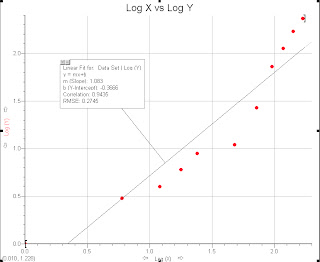This is the final comment from the members of JSSP. We enjoyed working together to find a good, nonlinear system and we have accomplished the task. We have concluded our write up portion of the project and the blog is now almost completed. We will add a few group pictures, and finish touch ups on the website before handing it in to Mr. Hnidei on Tuesday, May 24th, 2011. We hope that this project helps put some perspective on the real life applications of non-linearity.
JSSP: John, Somaya, Steve, and Paul.
Courses: MCV4U/MHF4U
The Bacteria Growth Experiment
"Bacteria is Awesome." MCV4U & MHF 4U
Sunday, May 15, 2011
Wednesday, May 11, 2011
The Bacterial Growth Graphs!
Tuesday, May 10, 2011
Monday, May 9, 2011
Wednesday, May 4, 2011
Progress In the Making: A quick update Day One to Day Three
 |
| This observation was made after 24 hours and it has shown that there was bacteria colonies in both petri dishes. |
 |
| The second day, the colonies developed but none of them were very clear of how much was growing. But certainly there were fresh ones that were on their way of producing. |
Sunday, May 1, 2011
Double Colonies Growing
The following image was taken at the 48 hour mark which shows how many colonies have formed. The colonies can look the same but if carefully observed, the colonies that are growing within each other can be seen and this is called double colonies. They grow within each other because sometimes bacteria can find left over nutrients from another colonies and that’s why you see two colonies stuck to each other.
 |
| This image shows double colonies grouped together |
Friday, April 29, 2011
A Great View of the Petri Dish
A petri
dish was slowly submerge into an antibacterial solution. ie. Clorox, Bleach.
This would ensure that the petri dish would have no
markings or stains to eliminate error when counting colonies of bacteria.
Subscribe to:
Comments (Atom)



